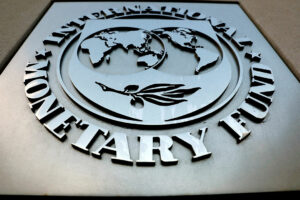PHL has room for new taxes — IMF
WITH the Philippines’ fiscal consolidation slowing this year, the International Monetary Fund (IMF) said the country still has room to introduce new tax measures.

By Luisa Maria Jacinta C. Jocson, Reporter
WITH the Philippines’ fiscal consolidation slowing this year, the International Monetary Fund (IMF) said the country still has room to introduce new tax measures.
“On the fiscal policy side, we see fiscal consolidation proceeding in 2024, although it will be more moderate than envisioned in earlier projections,” IMF Mission Chief Elif Arbatli Saxegaard said at a press briefing on Wednesday.
“In terms of spending, we actually see more spending on the public side. We see that being offset or financed by higher revenues,” she added.
The IMF projects the fiscal deficit to settle at 5.6% of gross domestic product (GDP) this year and in 2025. However, it noted that its deficit definition is different from the National Government’s (NG) as it uses a different standard in capturing the deficit.
“Based on our definition of the deficit, we expect the deficit to go from 6.1% in 2023 to 5.6% this year and to remain at 5.6% in 2025,” she said.
The NG set its budget deficit ceiling at 5.6% of GDP this year, equivalent to P1.48 trillion. Next year, the deficit is projected to settle at 5.3% or P1.54 trillion.
The IMF noted that there is room for additional tax measures that will create more fiscal space.
“Over the medium term, the fiscal consolidation plans remain appropriate and should be supported by a sustainable plan to raise tax revenues and implement expenditure reforms,” Ms. Saxegaard said.
The Philippine government can look into excise taxes as an option to generate revenues “sufficiently and quickly,” she said.
Last year, then-Finance Secretary Benjamin E. Diokno pushed for an excise tax on “junk food” and higher taxes on sweetened beverages. These taxes were projected to generate up to P76 billion in the first year of implementation.
However, the Department of Finance (DoF) earlier this year said there are no plans to introduce new tax measures apart from the ones already pending in Congress.
“In terms of other areas over the medium term, there could be a lot of different options that could be considered. One area is improving the efficiency of the value-added tax (VAT) system,” Ms. Saxegaard said.
Last year, the DoF said that the Philippines has one of the lowest VAT efficiencies in Southeast Asia despite having the region’s highest VAT rate at 12%.
From 2016 to 2020, the country collected an average of P723 billion from VAT, which is only around 40% of the expected VAT collection.
Ms. Saxegaard also noted the possibility of pursuing a carbon tax.
“We understand that there’s also different tradeoffs playing out here. The cost of power and electricity in the Philippines is quite high,” she said.
The Finance department has been studying various carbon pricing options for the country, including a carbon tax and emissions trading system (ETS). This as it seeks to encourage businesses to shift to sustainable practices.
The Philippines currently does not have any explicit form of carbon pricing.
“As a growing economy, the Philippines has to weigh different considerations in thinking about a carbon tax. It is one option for their consideration that can support the transition to a green economy to promote renewable energy, to shift consumption patterns away from polluting energy to more green energy sources,” Ms. Saxegaard said.
“In that respect, it could stay on the table. But it’s a complicated issue, so it needs to be considered very carefully.”
Meanwhile, IMF Representative to the Philippines Ragnar Gudmundsson said that the government should also pay close attention to granting tax incentives.
“What we would also recommend is continuing to monitor closely tax incentives as they’re being granted and ensuring that they contribute effectively to additional investments and momentum for growth.”
“There also may be a sense of provisions to these incentives so that eventually, once those investments have come to the Philippines and contributed to growth and that they’re sustainable over time, there will also be a contribution through, for instance, income tax over time.”
‘NEUTRAL’
For next year, the IMF said that the fiscal stance will be “neutral.”
“That means that the impulse from the fiscal policy is neither contractionary nor too expansionary,” Ms. Saxegaard said.
Financial conditions are also seen to improve as both the Bangko Sentral ng Pilipinas (BSP) and US Federal Reserve are expected to continue easing.
BSP Governor Eli M. Remolona, Jr. has said that the central bank can cut rates further in the fourth quarter, possibly by up to 50 bps. The Monetary Board’s remaining meetings are on Oct. 16 and Dec. 19.
“All of these financial sector developments, including the reserve requirement cut as well, can support the more favorable financial conditions. That will support a pickup in investment, private investment, and also some pickup in private consumption next year, allowing the fiscal side to be sort of more neutral,” Ms. Saxegaard said.
The BSP will slash the reserve requirement ratios (RRR) of big banks by 250 bps to 7% from 9.5% later this month.
SLOW FISCAL RECOVERY
In a separate report, Fitch Solutions’ unit BMI said that the Philippines’ recovery in its fiscal position will be more gradual.
It said that the proposed P6.352-trillion national budget marks an increase in public spending, which will derail consolidation efforts.
“This will reverse the country’s fiscal consolidation efforts. Admittedly, the Philippines fiscal recovery has already fallen behind regional counterparts and the latest budget certainly does not help this cause,” it said.
BMI said the government will “fall short” of its fiscal targets, projecting the budget gap to hit 5.9% of GDP this year.
The NG will also struggle to bring down debt levels, BMI said.
“While the authorities aim to reduce public debt as a proportion of GDP to 55.9% by 2028, we believe that this is unlikely to be met. To achieve this, the deficit must be maintained at 3.6% of GDP over the subsequent three years (2026-2028),” it said.
“But this would necessitate spending cuts of almost 1.0 percentage points, based on our estimates, making it challenging for the current administration to balance its economic agenda.”
Latest Treasury data showed that the NG’s outstanding debt dipped to P15.55 trillion as of end-August.
In the first half, the debt-to-GDP ratio stood at 60.9%. The government expects the debt ratio to end at 60.6% of GDP this year.
“Instead, we forecast the budget shortfall to average 4.6% over the same period. Consequently, public debt will recede more slowly, eventually reaching 58.8% of GDP in 2028.”
On the other hand, BMI noted that the government could surpass its revenue targets.
“Revenue targets are relatively watered down in comparison. The government is forecasting revenue collection to dip from 16.1% of GDP in 2024 to 15.8% in 2025. In our view, this is a tad too conservative especially when the macroeconomic backdrop is set to improve next year.”
In the eight-month period, revenue collections jumped 15.91% to P2.99 trillion from P2.58 trillion last year.
“Philippine policy makers tend to underestimate their revenue targets, as seen in the past two years. Currently, we have projected revenue collection to be around 16% of GDP, which is already higher than the government’s expectation of 15.8%. If revenue exceeds even our projections, we could anticipate a smaller budget deficit.”














